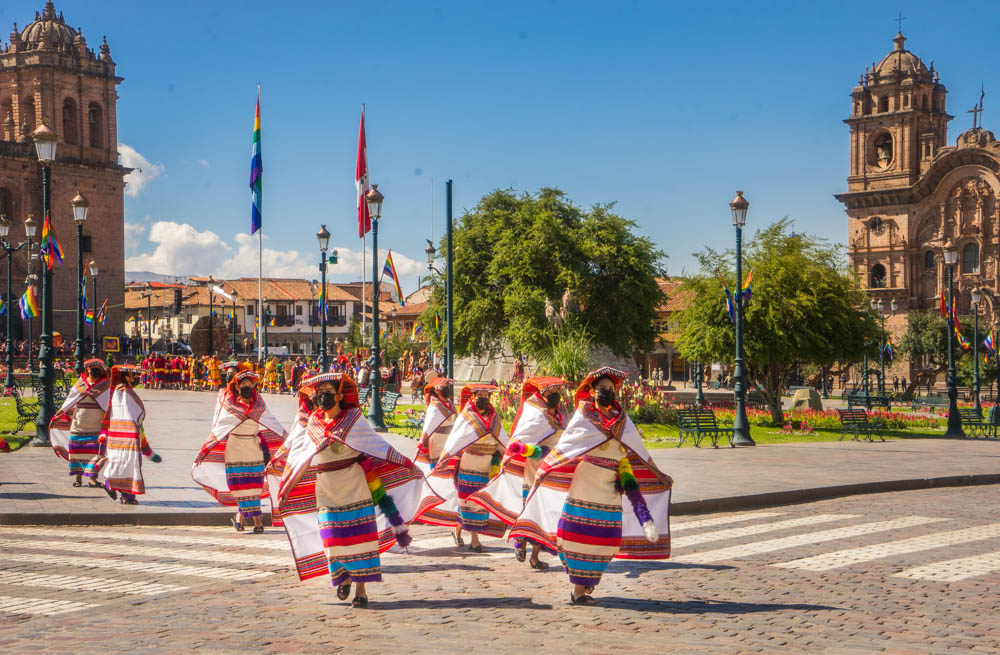The first educational institutions in Cusco were created by Inca Roca and perfected by Inca Pachacutec. Among them we have the Yachayhuasi, an educational institution for men and the ahuasi for women, the term Acllahuasi is a Quechua word that means house of the chosen ones. It was a center of women’s formation in the Empire of the Incas.
The Acllas were the most culturally educated women in the empire. They were truly chosen women, they came as tribute from their people and they lived cloistered in the Acllahuasi or House of the Acllas.
[mnky_ads id=”28246″]
All peoples had an obligation to tax future Acllas to the state. The Inca emphasized an official called “Apu Panaca” or “Lord of the Sisters”, to each province who was in charge of selecting girls between the ages of 8 and 10 that were singularly beautiful, free of physical defects. He placed them under the care of the Mamaconas. They were the teachers who instructed the acllas in the religious rites, the preparation of sacred foods and the elaboration of fine fabrics for the Sapa Inca and the nobility of the Tahuantinsuyo. Not only were these material forms, they also were a kind of knowledge and were seen as very important.
When the chosen girls were 10 years old they had to decide whether they wanted to return to their places of origin to be their parents or continue in Acllahuasi to become priestesses of the main gods, the most important sacred house acllahuasi Cuzco belonging to the Sun God. In addition to having at their disposal in some cases the care and offering of the Inca mummies,some of the women of the Accllahuasi were destined to the Inca like servants, they prepared the chicha for the Inca. Others became Mamaconas. And, others were chosen as prizes for the great Inca warriors and for the normal and privileged nobility.

The chroniclers Garcilaso Inca de la Vega and Guaman Poma de Ayala denominate women as virgins of the sun like nuns. Bernabe Cobo describes the acllahuasi near the temple of the sun “Qoricancha” like a “monastery of mamaconas. Often this institution of Acllahuasi was compared by the Spaniards with the Christian convents, but in reality their functions wen much further since they also had the role of producing textiles in bulk for the Inca state,

Textile production for the state had one purpose: to maintain the state’s economy of redistribution. It is well-known that among the most appreciated gifts that the Inca could give were coca, women and clothes. This action was generated as a way to compensate the faithful, warriors or people whose activity generated value for the Inca State. The gift of redistribution strengthened ties with the conquering ethnic groups or the generals and created a stable situation between the two parties. Thus, the Inca economy needed to redistribute very large amounts of clothing to maintain the desired balance, as well as coca and women.
The acllahuasis also functioned as a store of women. From it the Inca could arrange to give a wife to the curacas or people whose services had to be compensated. In addition to being given to compensate the faithful, they were delivered by the Inca in “marriage” to certain curacas to make certain unions. With these marriages the Inca built necessary political alliances.
Another function of the aclla is to prepare food and drinks for celebrations or rituals, or for chicha a very precious drink, made from corn. The acllas were then important in the maintenance of the redistributive system.
Men could not enter the precincts of the Acllahuasi to see the women. The state of acllas and mamaconas was known by the Inca thanks to the fact that he sent the Coya his wife, who like his daughters, were the only ones that could see and speak with the virgin women. If someone violated this rule, the penalty was death. If any of the mamaconas helped him get in, they were given the same penalty.
The institution of acllahuasi, in addition to its great importance within the Inca economic balance, demonstrates the great role played by women within the Andean world.
[mnky_ads id=”28246″]



